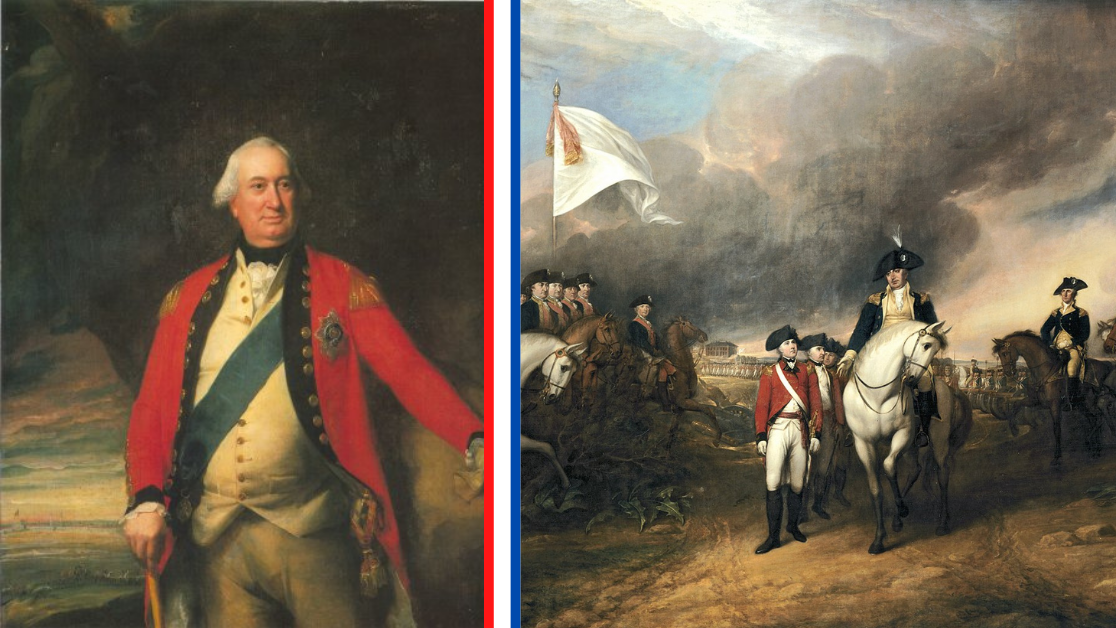Who was Lord Charles Cornwallis?

SUMMARY
The name alone is a mouthful, but the fact is that without Charles Cornwallis, the American Revolution might’ve had a very different ending.
Lord Charles Cornwallis (December 31, 1738 – October 5, 1805) served as Lieutenant General for the British Army. He led the British campaign to capture Virginia and the Carolinas during the American Revolution. As you probably know, the British were quick to win early victories in the earliest days of the American Revolution. In fact, Cornwallis is credited with winning decisive battles in both Long Island and New York City before moving south.
The Battle of Camden
In August of 1780, Cornwallis defeated American General Horatio Gates at the Battle of Camden in South Carolina. However, most history buffs will tell you that the victory was a hollow one. That’s because of a bout of dysentery that basically wrecked Gates’ entire battalion. With his infantry troops down for the count, the majority were unable to keep up the fight.
Talk about a morale suck, too. Even though the Continental Army outnumbered the British two to one, no one can engage the enemy when they’re suffering from serious tummy troubles. Cornwallis saw his chance and took it. In the wee hours of August 16, 1780, the British Army charged forward, bayonets flashing in the dawn’s light. You probably can tell where this is going. The Americans were easily subdued.
Easy Victories Don’t Hold Up
Sure, the Brits one that one and several others after that too. But as the saying goes, just because you win a battle does not mean you win a war. Within a year, it was nearly impossible to find any ounce of esprit de corps within the British ranks. And, as we all know, without morale, it’s hard to keep a squad motivated. The war dragged on for another six years. Eventually, Lt. Gen. Cornwallis started to see the writing on the wall. His resources were just about all the way gone. That's to say nothing of his troop's energy levels. Can you imagine deployments in those conditions without any home leave?
In March of 1781, Cornwallis marched his soldiers to the Battle at Guilford Courthouse. Cornwallis managed to rally. The Brits outnumbered Americans significantly, but the American troops didn’t let that deter them. When the musket smoke cleared, Cornwallis discovered he’d lost 25% of his infantry.
As is smart maneuvering, the Americans retreated to preserve resources. While we licked our wounds and tended to our injured, Cornwallis had an epiphany. He wasn’t going to win this battle and he might not even win the war. Within days, he and his troops abandoned the Carolinas altogether.
They retreated, fast and quick, to Yorktown, Virginia.
The Battle of Yorktown
In the summer of 1781, Cornwallis and his men headed north to Yorktown, Virginia. There, he and his remaining troops got to work quickly, constructing forts in preparation of the eventual American attack. And attack we did. In September, the Continental Army arrived with our French allies. In fact, 5,500 troops had just landed in Newport, Rhode Island, to help the cause. America needed a massive win if we were going to convince our allies that our autonomy from the British Empire was worthwhile.
On seeing the approaching Army, Cornwallis sent word to General Henry Clinton, the Commander-in-Chief of the British Army. He told him in very clear terms that what he needed was reinforcements – and fast. The trouble was that General Clinton was delayed in leaving New York. That meant the perfect opportunity for the Continental Army to advance
By this time, Washington was quick on his feet and used every advantage to his disposal to win the war. Prospects looked bleak though because once again, the Continental Army was facing down outnumbered odds. First, the army dug trenches just 800 yards from British forces. Then, they emptied their rifles and ran through the dark. Armed only with bayonets, Cornwallis and the Brits never heard them coming.
A weeklong assault ensued. Artillery fire helped keep the British in check and soon enough, Cornwallis knew there was no way he’d win. So, he sent a soldier across the battlefield carrying a white flag. As you might expect, Lord Charles Cornwallis and all his men were taken as prisoners of war. Washington forced them to walk over a mile so that spectators could witness the British’s defeat.
The Battle at Yorktown was the final major battle of the Revolutionary War, and the British would soon enter a treaty ending the conflict altogether.
Speaking of the Revolutionary War, here's why George Washington tried to kidnap the future king of England.
SHARE
